Progressive Web Apps: Escaping Tabs Without Losing Our Soul
It happens on the web from time to time that powerful technologies come to exist without the benefit of marketing departments or slick packaging. They linger and grow at the peripheries, becoming old-hat to a tiny group while remaining nearly invisible to everyone else. Until someone names them.
This may be the inevitable consequence of a standards-based process and unsynchronized browser releases. We couldn't keep a new feature secret if we wanted to, but that doesn't mean anyone will hear about it. XMLHTTPRequest was available broadly since IE 5 and in Gecko-based browsers from as early as 2000. "AJAX" happened 5 years later.
This eventual adding-up of new technologies changes how we build and deliver experiences. They succeed when bringing new capabilities while maintaining shared principles:
- URLs and links as the core organizing system: if you can't link to it, it isn't part of the web
- Markup and styling for accessibility, both to humans and search engines
- UI Richness and system capabilities provided as additions to a functional core
- Free to implement without permission or payment, which in practice means standards-based
Major evolutions of the web must be compatible with it culturally as well as technically.
Many platforms have attempted to make it possible to gain access to "exotic" capabilities while still allowing developers to build with the client-side technology of the web. In doing so they usually jettison one or more aspect of the shared value system. They aren't bad — many are technically brilliant — but they aren't of the web:
- Adobe AIR Applications
- Windows Store Apps
- Chrome Packaged Applications
- Firefox OS Packaged Applications
- Cordova/PhoneGap and Crosswalk Apps
- BlackBerry WebWorks Apps
- W3C Widgets (these enjoyed several implementations)
- WebOS Apps
- Chromium Embedded Framework
- Electron
These are just the ones that spring to mind offhand. I'm sure there have been others; it's a popular idea. They frequently give up linkability in return for "appiness": to work offline, be on the home screen, access system APIs, and re-engage users they have required apps be packaged, distributed through stores, and downloaded entirely before being experienced.
Instead of clicking a link to access the content you're looking for, these systems make stores the mediators of applications which in turn mediate and facilitate discovery for content. The hybridzation process generates applications which can no longer live in or with the assumptions of the web. How does one deploy to all of these stores all at once? Can one still keep a fast iteration pace? How does the need to package everything up-front change your assumptions and infrastructure? How does search indexing work? It's a deep tradeoff that pits fast-iteration and linkability against offline and store discovery.
Escaping the Tab: Progressive, Not Hybrid
But there is now another way. An evolution has taken place in browsers.
Over dinner last night, Frances and I enumerated the attributes of this new class of applications:
- Responsive: to fit any form factor
- Connectivity independent: Progressively-enhanced with Service Workers to let them work offline
- App-like-interactions: Adopt a Shell + Content application model to create appy navigations & interactions
- Fresh: Transparently always up-to-date thanks to the Service Worker update process
- Safe: Served via TLS (a Service Worker requirement) to prevent snooping
- Discoverable: Are identifiable as "applications" thanks to W3C Manifests and Service Worker registration scope allowing search engines to find them
- Re-engageable: Can access the re-engagement UIs of the OS; e.g. Push Notifications
- Installable: to the home screen through browser-provided prompts, allowing users to "keep" apps they find most useful without the hassle of an app store
- Linkable: meaning they're zero-friction, zero-install, and easy to share. The social power of URLs matters.
These apps aren't packaged and deployed through stores, they're just websites that took all the right vitamins. They keep the web's ask-when-you-need-it permission model and add in new capabilities like being top-level in your task switcher, on your home screen, and in your notification tray. Users don't have to make a heavyweight choice up-front and don't implicitly sign up for something dangerous just by clicking on a link. Sites that want to send you notifications or be on your home screen have to earn that right over time as you use them more and more. They progressively become "apps".
Critically, these apps can deliver an even better user experience than traditional web apps. Because it's also possible to build this performance in as progressive enhancement, the tangible improvements make it worth building this way regardless of "appy" intent.
Frances called them "Progressive Open Web Apps" and we both came around to just "Progressive Apps". They existed before, but now they have a name.
What Progressive Apps Look Like
Taking last year's Chrome Dev Summit site as an example, we can see the whole flow in action (ht: Paul Kinlan):
- The site begins life as a regular tab. It doesn't have super-powers, but it is built using Progressive App features including TLS, Service Workers, Manifests, and Responsive Design.
- The second (or third or fourth) time one visits the site -- roughly at the point where the browser it sure it's something you use frequently -- a prompt is shown by the browser (populated from the Manifest details)
- Users can decide to keep apps to the home screen or app launcher
- When launched from the home screen, these apps blend into their environment; they're top-level, full-screen, and work offline. Of course, they worked offline after step 1, but now the implicit contract of "appyness" makes that clear.
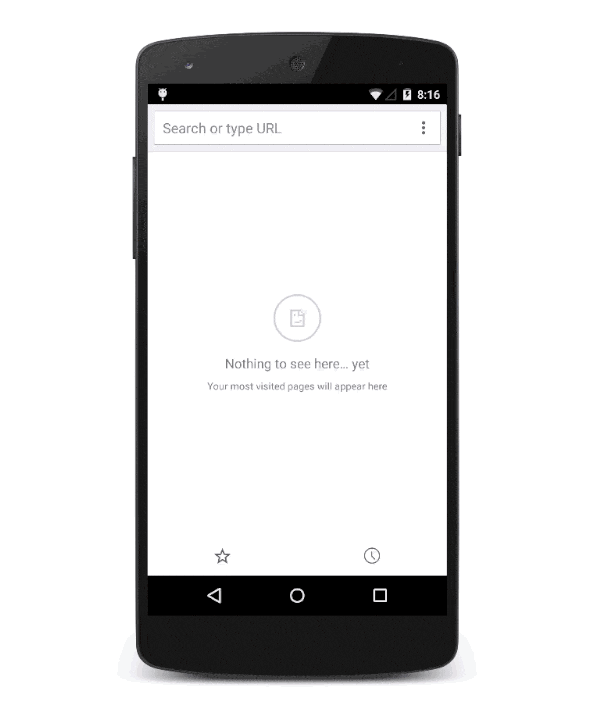
Here's the same flow on Flipboard today:
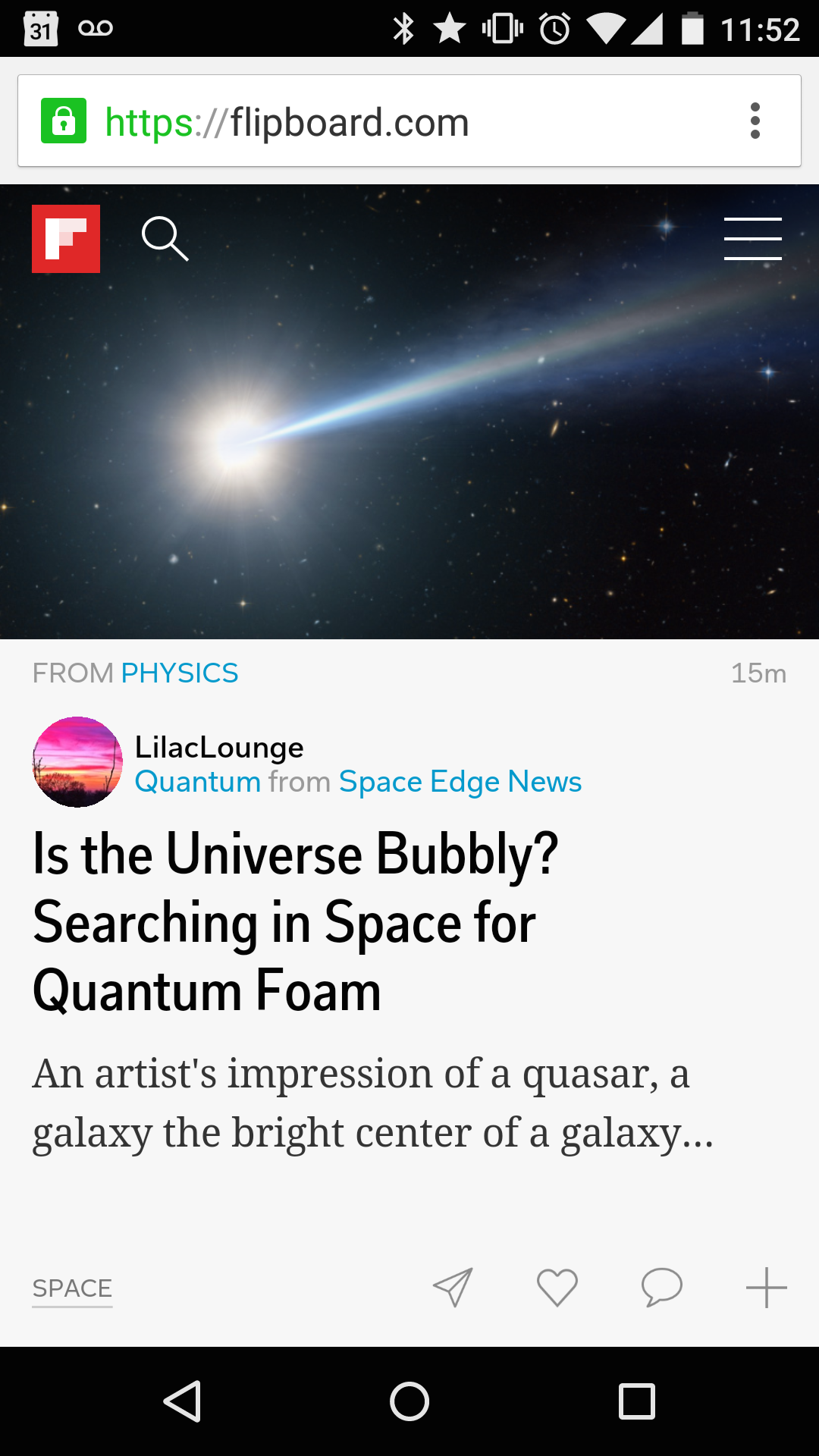
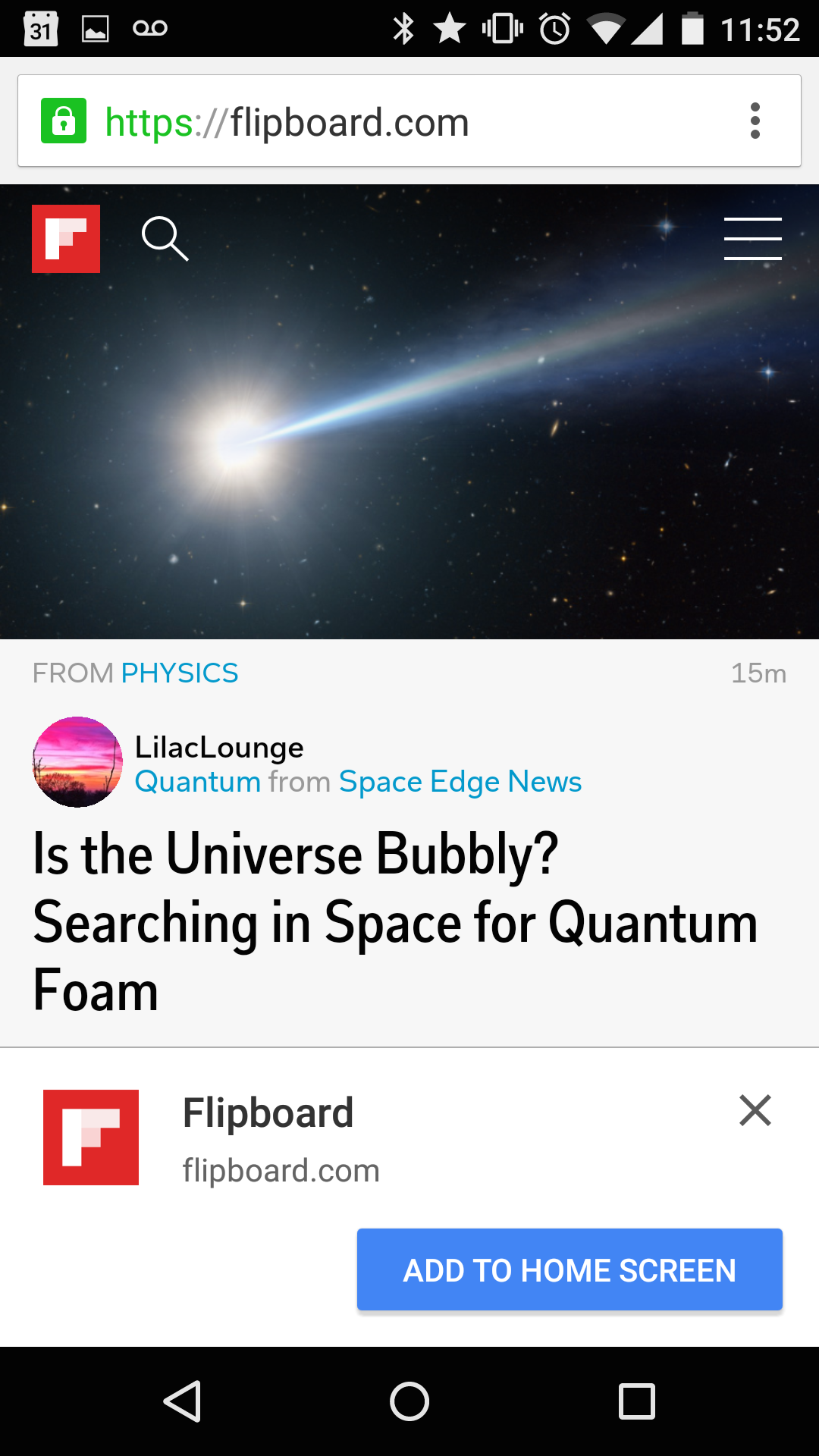
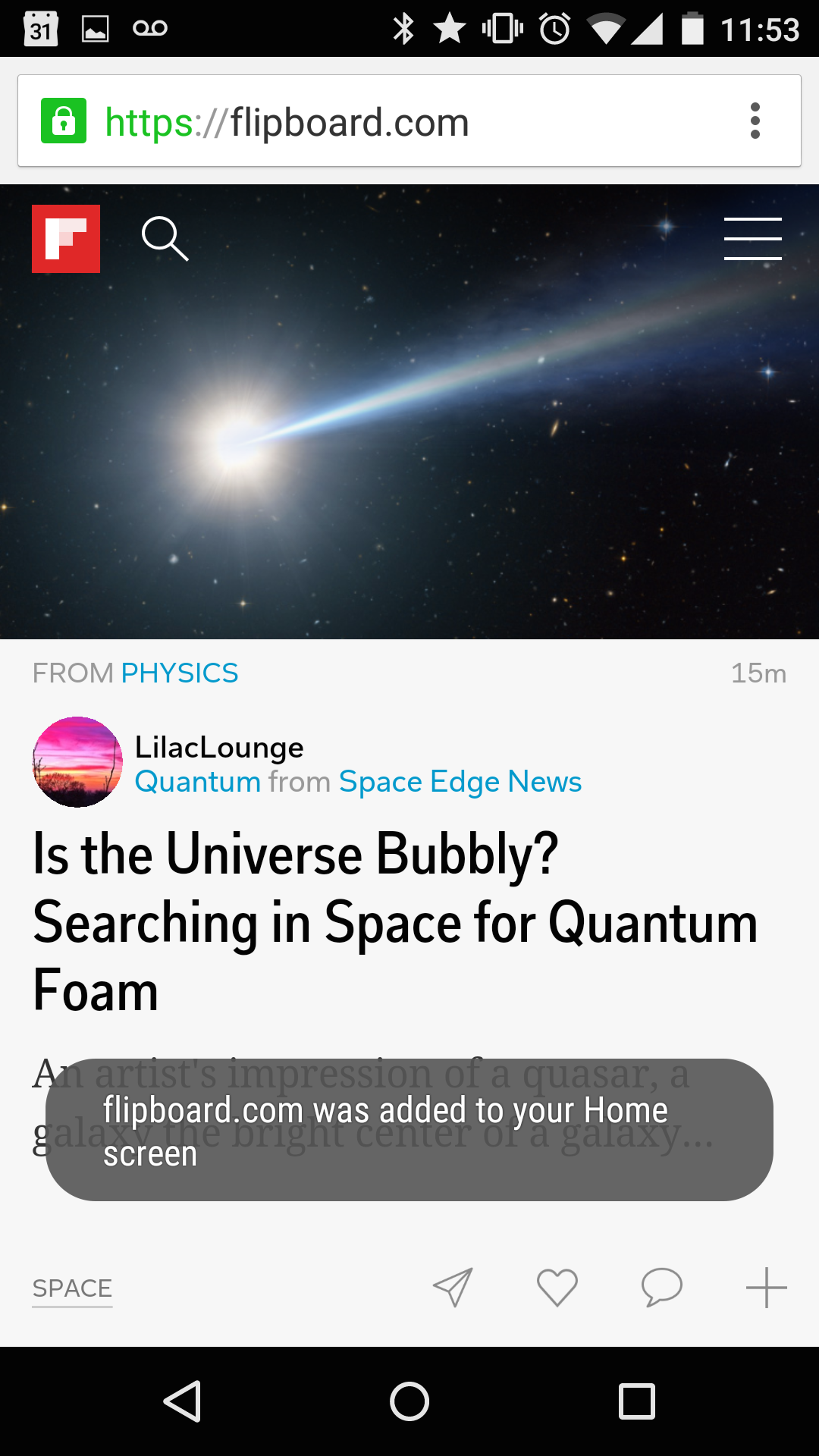
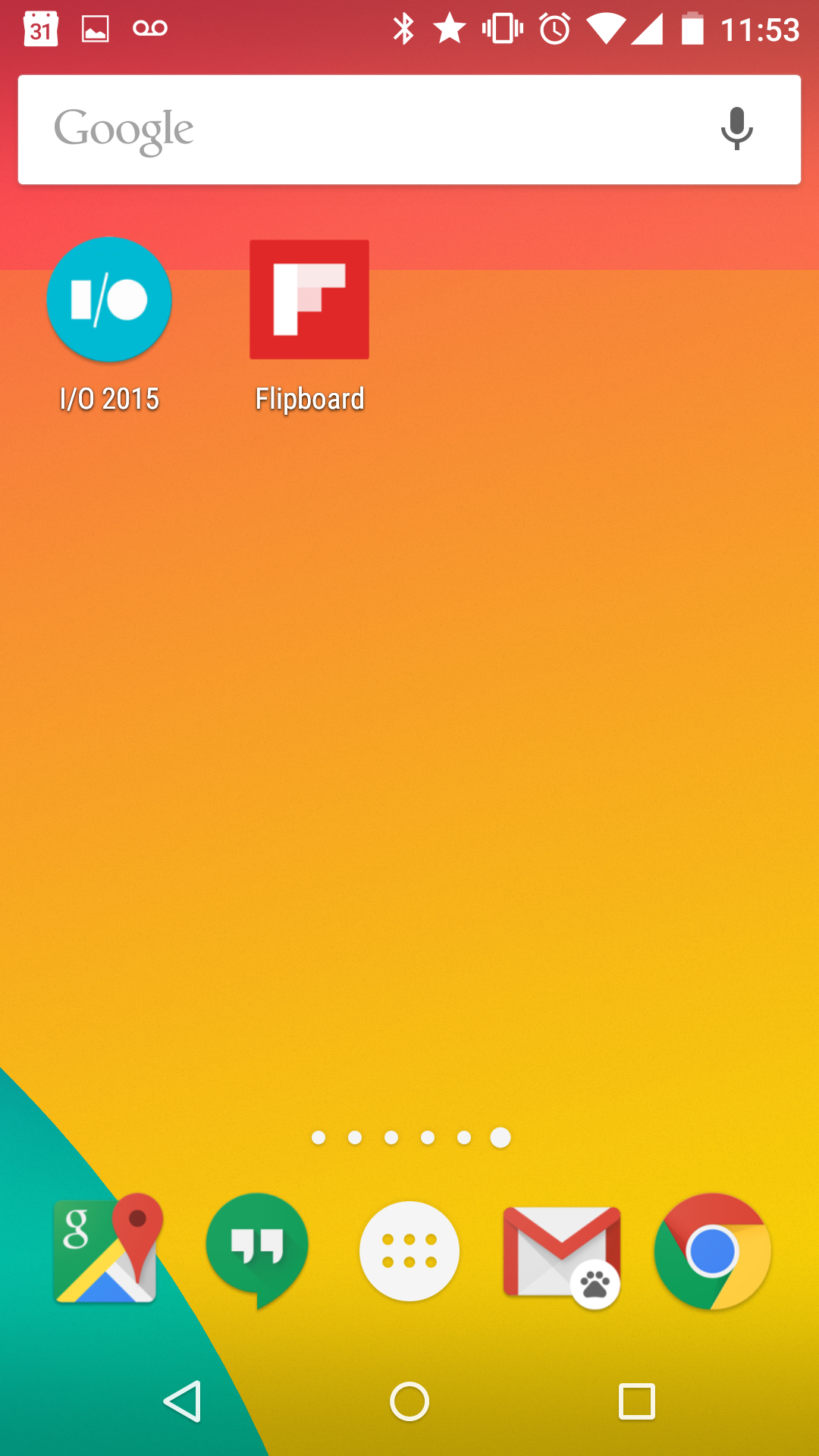


The Future
Today's web development tools and practices don't yet naturally support Progressive Apps, although many frameworks and services are close enough to be usable for making Progressive Apps. In particular, client-side frameworks that have server-rendering as an option work well with the model of second-load client-side routing that Progressive Apps naturally adopt as a consequence of implementing robust offline experiences.
This is an area where thoughtful application design and construction will give early movers a major advantage. Full Progressive App support will distinguish engaging, immersive experiences on the web from the "legacy web". Progressive App design offers us a way to build better experiences across devices and contexts within a single codebase but it's going to require a deep shift in our understanding and tools.
Building immersive apps using web technology no longer requires giving up the web itself. Progressive Apps are our ticket out of the tab, if only we reach for it.
Thanks to Frances Berriman, Brian Kardell, Jake Archibald, Owen Cambpell-Moore, Jan Lehnardt, Mike Tsao, Yehuda Katz, Paul Irish, Matt McNulty, and John Allsopp for their review and suggestions on this post.